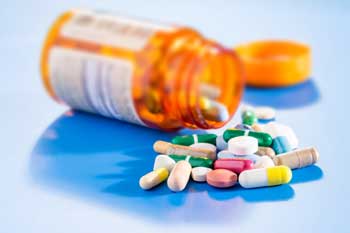
An estimated 25-40 million adults experience pain daily (NIH, 2015). Pain is an unpleasant sensation that can range from mild, localized discomfort to agony caused by disease, injury, or something that hurts the body. (Merrian-Webster, 2016) In order to combat pain many Americans resort to opioids to manage their symptoms. Opioids, such as oxycodones (OxyContin and Percocet) are powerful narcotics used by many physicians as their first choice in treating pain. This has led to an epidemic in opioid utilization with Americans being the number one consumer of these drugs throughout the world. In 2012, 259 million prescriptions were written for opioids, which is enough medication to give every American adult their own bottle of pills. (Center for Disease Control and Prevention, 2014). This epidemic does not just impact adults. In young people12-17 years of age there are 467,000 current users of opioid pain medication. Often this early utilization of pain medications leads to a transition to heroin and other hard core street drugs and a life long battle with addiction. (Center for Disease Control and Prevention, 2014) In the United States, more than two million people are addicted to opioid medications. Unfortunately, more people die from prescription opioid overdose than from heroin, cocaine, and all other drugs combined (U.S. Centers for Disease Control, November 2011). Seventy-eight Americans die every day from an opioid overdose.
Try physical therapy first instead of opioids to reduce pain and improve function. Opioids act by overriding or masking the pain signals. Physical therapy in contrasts works at finding and treating the underlying cause of the pain. The physical therapist uses a wide variety of techniques to relieve pain and improve function such as: Modalities (the use of cold, heat, electricity, etc) to decrease pain, improve circulation and/or help muscles relax; Hands-On Manual Therapy Techniques- techniques done by physical therapists using their hands in very precise ways to relax muscles in spasm, lengthen tight muscles, improve circulation, and optimize scar tissue development; Graston technique/IASTM (instrument-assisted soft tissue mobilization) to increase circulation, optimize scar tissue and facilitate healing; Exercises to improve strength and enhance optimal tissue healing; Body mechanics and posture education to help in understanding why the problem occurred and ways to prevent further injury.
The combination of the above techniques can relieve pain and improve function and reduce opioid use there by improving quality of life.
We can help!
If pain is limiting you from doing the activities you enjoy, give Mishock Physical Therapy a call for a Free Phone Consultation at (610)327-2600 or email your questions to mishockpt@comcast.net. Also, visit our website to learn more about our treatment philosophy, our physical therapy staff, and our five convenient locations in Gilbertsville, Skippack, Phoenixville, Barto, Limerick and Stowe (Pottstown) at www.mishock.wpengine.com. (Dr. Mishock is one of only a few clinicians with doctorate level degrees in both physical therapy and chiropractic in the state of Pennsylvania.)
* Phone Consultations are not applicable to patients in federal or state funded programs, such as Medicare and Medicaid.
* Screenings are consultations and do not involve a physical therapy evaluation or treatment.
